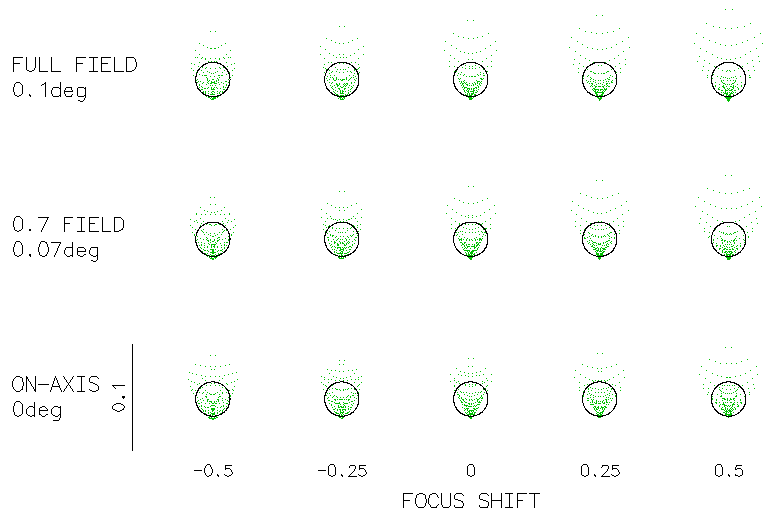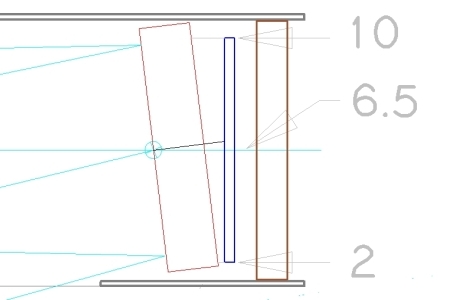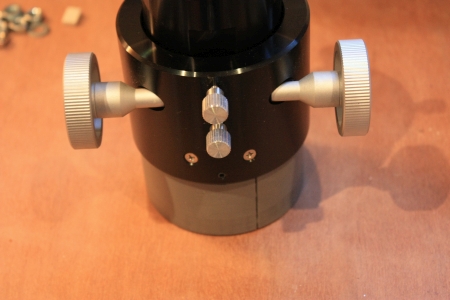Kutter version 2, building log
This page describes the second version of the 150F24 Kutter. For the mirror set, again go to the mirror making page.
Design review
The design overview of the realized telescope:

The two finished mirrors turned out with the following parameters:
- Primary: D=155mm, RoC=4494mm, k=0
- Secondary: D=72mm, RoC=-4606mm, k=0
These values require some design changes in the telescope design, in the tilt angles and the distances:
- Primary tilt: 2.62°
- Secondary tilt: 6.82°
- Primary to Secondary: 1375mm
- Secondary to focus: 1400mm

The Strehl ratio is around 77% in the center and drops to about 66% on the edge of a 0.2° field of view. This is worse than the standard all-spherical anastigmat, which reaches up to 90% on axis.
However, the standard design also has a larger system focal length of 4300mm (F/29) and hence a 360mm longer build (p'=1760mm). Also the primary tilt angle is a bit too tight for me, the entrance beam hardly clears the secondary edge in that design.
The build is fully based on the previous Version 1, only the primary-secondary tube connector and the secondary tube hole had to be adapted. Finally I opted for a completely new tube, made of aluminium instead of PVC. This solution should be less affected by thermal effects.
The secondary cell, which was placed under an angle in the first version, is now perpendicular to the tube. The secondary angle is created by means of spacers under two of the three mirror glueing points.


For the actual glueing of the mirror to the cell a jig is made that defines its pre-calculated location and orientation. This is neccessary because the adjustment range of the collimation screws is fairly limited and also the center of the mirror should remain close to the tube centerline.
The connection between tube and focuser has again been made with some pieces of PVC tubing. The focuser fits around a 74mm shape, so the aluminium tube inner diameter of 77mm has to be decreased by means of 1.5mm PVC tube. Inside of this a more rigid piece of PVC is glued to serve as mounting base for the focuser.


The image above shows the completed insert, without and with focuser.
Using a 15mm eyepiece, resulting in a magnification of 240x, shows no discernible coma on stars. The system gives very pleasing views on solar system objects, with very good resolution.